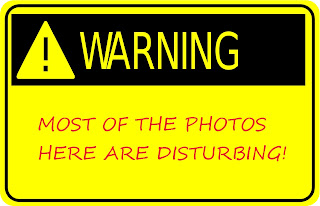We arrived in Siem Reap International Airport at around 10pm. It was a tiny airport. We were picked up by Bou Savy Guesthouse tuktuk driver. Travel time from airport to the guesthouse is about 30 minutes.
Our driver was named Mr. Leng, and he was our driver for the duration of our stay in Siem Reap. He was a man of few words but was very hardworking and patient.
To have a stress-free vacation, we availed of Bou Savy's 3 nights 2 days package for $81.
It includes 3 Nights Accommodation with Twin A/C Room + Daily Breakfast + one time Dinner + Sightseeing tour with Tuk Tuk + Complimentary drinking water for trip + Pick up and transfer services + Free internet, Free WiFi.
The itinerary is as follows:
- Day One: After breakfast, start to visit South Gate of the Angkor Thom, Bayon, Baphoun, Elephant Terrace, Terrace of Leper king, Takoa, Ta Prom. Break for Lunch. Afer Lunch visit Banteay kdey, Srah Srang and Angkor Wat.
- Day Two: After Breakfast, start to visit Pre Rup, Banteay Srey, Banteay Samre. Break for Lunch. After visit East Mebon, Tasom, Neak Pean, Preah Khan and Sun Set at Bakheng Mountain.
Since we requested for Angkor Wat sunrise for day 1, we were asked to just add $2. Please check out Bou Savy's website to check other packages.
The temple tour was really nice. To get inside the temple complex, visitors must purchase tickets with their photos printed therein, costing $20 for 1 day unlimited entrance to temples, $40 for 3 days and $60 for 7 days.The ticket will be checked and must be shown to the guards prior entry to the temples.
We purchased the 3-day unlimited entry ticket, with 7 days validity. You will notice that my ticket has 2 punch holes on it, meaning I already visited temples for 2 days.
Among the temples in Siem Reap, I enjoyed Angkor Wat sunrise the most. We arrived at the temple at about 5am and it was really, really dark. The temple didn't have any street lights or anything that would at least illuminate the area. We just followed the people with tiny flashlights to the area where the structure was best photographed.
Anyways, at about 5:20am, the silhouette of Angkor Wat started to show. Cameras started to click and there were literally hundreds of people taking photos. Thereafter, daylight started to show up and cameras clicked non-stop. When I have taken enough photos, we left the area and ventured the rest of the complex.
We ventured different temples based on the itinerary of Bou Savy. Our driver dropped us off the temple entrance and waited patiently for us. There are designated parking spaces for tuktuks, buses and private vehicles.
In general, the Siem Reap temples were really amazing, no wonder Cambodians are proud of them. However, after 2 days of non-stop temple-hopping, I felt I had temple overload. In my opinion, I would have already been nauseous if I visited another temple on the third day. LOL.
Get ready for humidity because the heat, dust and lack of shades will surely take a toll on the body. Considering that November was said to be the best time to visit Siem Reap because the weather was supposedly colder, temperature was still hot at an average of about 35 degrees celsius. Also, please note that there are certain temples that prohibit entry of visitors wearing shorts.
Night life in Siem Reap was kinda nice in Pub Street, near the Old Market. This place is where you'll find most tourists at night having drinks, buying souvenirs, having foot massage or fish massage, sipping a cup of coffee, etc.
During our trip, I noticed these colorful tents along the side streets. According to our driver, someone is getting married and this is the tent used for the celebration.
Every morning, there are a lot of Buddhist Monks collecting daily alms.
And this is serious overloading!!!
En route to Phnom Penh from Siem reap, I noticed that rural Khmer houses are raised a few meters off the ground. This is so in order for the floods not to affect the main rooms. It is also used to provide shelter for livestock.
For my entry for Phnom Penh City, please refer here:
The bus we were in, along with other buses, trucks and smaller vehicles boarded a barge, and the latter crossed the Mekong River for about 10 minutes.
A few hours thereafter, we exited Cambodia and entered the boarder to Vietnam.

